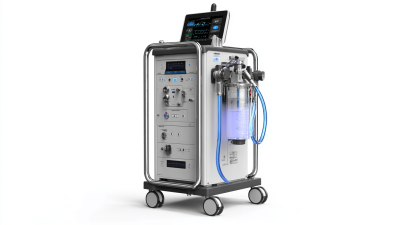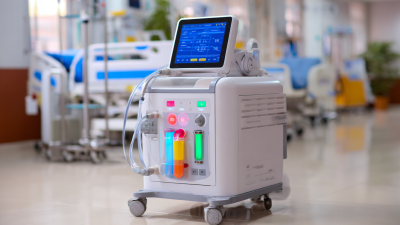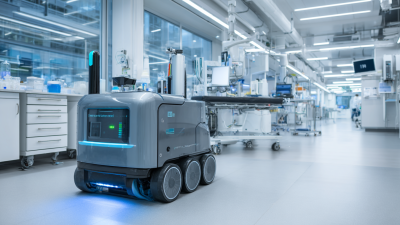In the ever-evolving healthcare landscape, the importance of choosing the right Secretion Suction Machine cannot be overstated. According to a recent industry report by Market Research Future, the global suction device market is expected to grow at a CAGR of 7.4% from 2021 to 2028, driven by an increasing prevalence of chronic respiratory diseases and the growing demand for efficient suctioning solutions in medical facilities. However, with numerous types of suction machines available, each tailored to specific requirements, healthcare professionals often face challenges in selecting the most suitable option for their needs. Understanding the intricacies of different suction machines, their functionalities, and how they address various clinical scenarios is crucial for enhancing patient outcomes and operational efficiency in medical settings. This guide aims to demystify the selection process, providing insights into common problems faced with various types of secretion suction machines, ultimately empowering healthcare providers to make informed decisions that align with their operational objectives.

When it comes to selecting the right secretion suction machine, it's essential to understand the various types available in the market. These machines can broadly be categorized into portable and stationary types. Portable suction machines are ideal for home care settings and emergency situations, offering mobility and ease of use. On the other hand, stationary machines are suited for hospital environments, where continuous suctioning is required.
Tips: When choosing a portable suction machine, check its battery life and weight. The longer the battery lasts and the lighter the device, the better it will serve in emergency situations. For stationary machines, look at suction strength and capacity, ensuring that it meets the specific needs of your practice or facility.
Additionally, consider the noise level of the machine. Some models operate relatively quietly, which is particularly important in sensitive environments like pediatric units. Ensure that the device has an easy-to-clean design as hygiene is critical when dealing with medical equipment. Taking these factors into account can help you make an informed choice that aligns with your specific requirements.
This chart provides an overview of the different types of secretion suction machines based on their usage frequency in various medical settings.
When selecting a secretion suction machine, it is vital to consider key factors that align with your specific needs. First and foremost, evaluate the machine's suction power. A powerful suction capability ensures efficient removal of secretions, which is crucial for patient safety and comfort. Look for machines that offer adjustable settings, allowing for customization based on different clinical scenarios.
Additionally, portability and ease of use are essential elements in your decision-making process. A lightweight and compact design enables healthcare professionals to easily transport the machine within various care settings. User-friendly interfaces and clear indicators can significantly reduce the learning curve for new users, ensuring that the machine can be operated effectively in urgent situations. Lastly, consider the maintenance requirements; a machine that is easy to clean and service will provide you with better longevity and reliability in the long run.
| Feature | Description | Importance Level |
|---|---|---|
| Suction Power | Measured in mmHg, higher suction power is required for thicker secretions. | High |
| Portability | Compact and lightweight designs for easy transport. | Medium |
| Noise Level | Quiet operation for patient comfort, measured in dB. | High |
| Ease of Use | User-friendly controls and easy assembly/disassembly. | High |
| Maintenance Requirements | Frequency and complexity of cleaning and maintenance tasks. | Medium |
| Power Source | Electric, battery-operated, or manual options affecting use cases. | High |
| Suction Canister Size | Larger canisters reduce the need for frequent changes. | Medium |
| Filter Options | Includes bacterial filters for patient safety and hygiene. | High |
When selecting a secretion suction machine, understanding the top features that enhance efficiency is essential. A recent industry report from MedTech Insights reveals that machines equipped with variable suction settings can improve patient outcomes by up to 30%. This adaptability allows healthcare providers to tailor suction levels according to the patient's needs, minimizing trauma to delicate tissues while ensuring effective secretions removal.

Another key feature to consider is the weight and portability of the suction machine. According to a survey conducted by the American Association for Homecare, over 65% of healthcare professionals reported that lightweight and portable devices significantly improve workflow in both clinical and home settings. This mobility not only facilitates better access to patients but also encourages timely interventions, which are crucial in emergency situations.
Finally, a reliable filtration system is indispensable. A study published in the Journal of Medical Devices indicates that suction machines with advanced filtration can reduce the risk of cross-contamination by 40%. By selecting a machine that integrates high-efficiency particulate air (HEPA) filters, healthcare providers can ensure a safer environment for both patients and staff, ultimately enhancing the overall efficacy of suction procedures.
When selecting a secretion suction machine, it's crucial to be aware of common mistakes that can hinder your decision-making process. One typical error is underestimating the suction power required for your specific needs. Different conditions demand varying levels of suction, and failing to assess this can lead to inadequate performance. Ensure you analyze your requirements thoroughly to avoid being left with a machine that can't handle the necessary workload.

Another frequent oversight is neglecting the importance of portability and ease of use. Many users forget that they may need to move the machine frequently or use it in various settings. Choosing a bulky, complex machine can lead to frustration and even compromise patient care. When shopping, look for models that are lightweight and designed with user-friendly features, making it easier to operate in critical situations.
Lastly, many buyers overlook the significance of maintenance and support services. A common mistake is selecting a machine based solely on price without considering long-term service costs. Regular maintenance is essential for optimal performance, so ensure you pick a machine from a manufacturer that offers reliable customer support and easy access to replacement parts. Remember, a little extra diligence in your selection process can significantly enhance your experience and outcomes.
Investing in a high-quality secretion suction machine is crucial for healthcare settings, as it significantly enhances patient care and operational efficiency. According to a report by the Global Market Insights, the suction pump market is expected to exceed $1.5 billion by 2026, driven by increasing demand for effective respiratory care solutions. These machines are essential in various medical environments, particularly in intensive care units, where rapid suction of secretions can prevent complications such as aspiration pneumonia, which affects up to 30% of patients with swallowing difficulties.
Moreover, high-quality secretion suction machines are designed to provide reliable performance and greater suction capacity, ensuring that healthcare professionals can respond swiftly in emergencies. The American Association for Respiratory Care highlights that effective airway management can reduce hospital stays by 15-20%, translating into lower healthcare costs and better patient outcomes. By choosing advanced suction machines, facilities can not only optimize their resource allocation but also enhance the overall quality of care delivered to patients, showcasing the long-term value of this critical investment.






